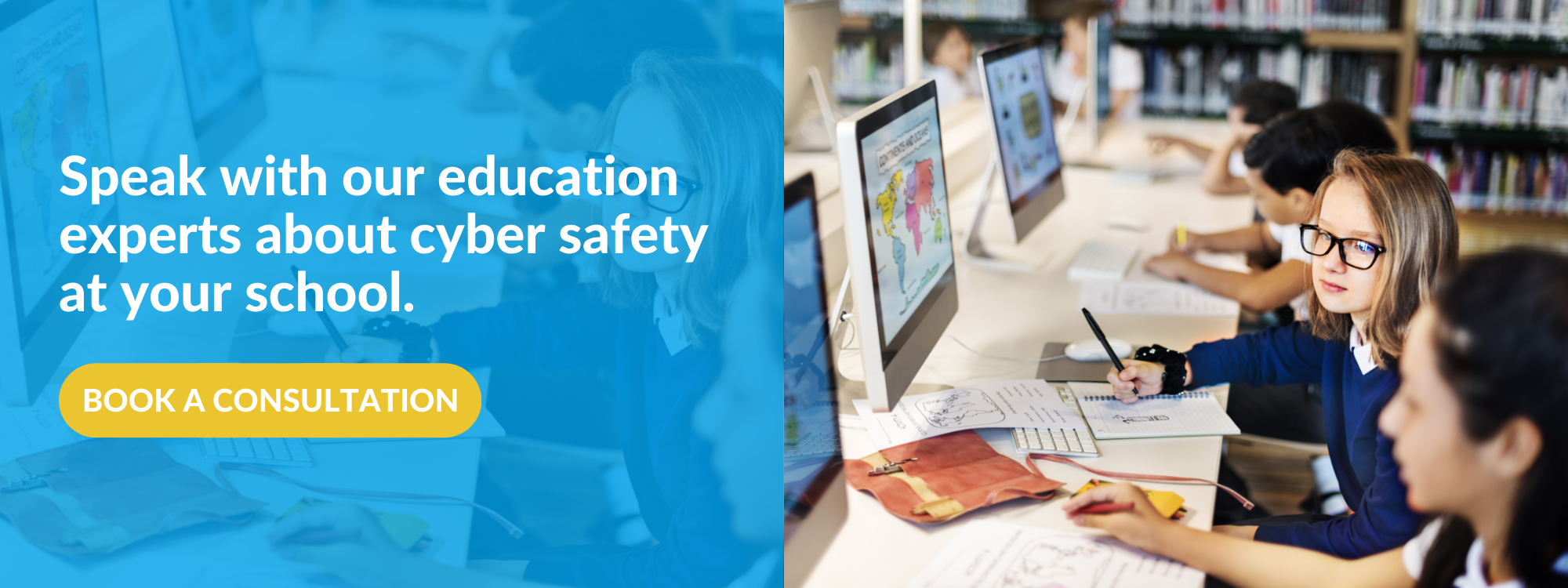COVID crisis highlights need for greater focus on student online safety
February 22, 2021

Practically overnight, the pandemic forced our school communities to transition to new modes of teaching and learning. With remote instruction now firmly established as part of the new normal, student cyber safety has emerged as an urgent priority for school leaders.
By the end of March 2020, COVID-led school closures had impacted 1.5 billion students across 165 countries. Australia & New Zealand were both included in that number and no state, territory or province was immune. In Victoria, where lockdowns were protracted, only 3 per cent of children were physically attending school by early May.
Related Blog: A deep-dive into remote learning and how it can improve education
The challenges have been unprecedented for all stakeholders - from school leaders to teaching staff, students and parents.
In addition to grappling with logistical and pedagogical obstacles, school leaders have needed to confront the stark reality of surging online risk for digital learners.
With the acceleration of device use and online learning across all school sectors in recent years, issues around digital health and wellbeing were a growing concern for schools in the pre-pandemic era.
But with the abrupt shift to remote learning - and students spending more and more time online, accessing an ever-expanding range of digital tools - those concerns have intensified sharply. And with good reason.
More time online means more potential for risk exposure
Research from Australia’s eSafety Commissioner showed that nearly half of students aged 12 to 17 experienced cyberbullying and/or social exclusion, were contacted by a stranger, or received pornographic or violent images.
The potential online risks for primary school students are if anything even greater, say experts. At the same time, studies show that the majority of Australian parents lack the confidence to deal with the issue.
When students access the internet on a school network, enterprise firewalls mostly block inappropriate sites and help to manage distractions. But what happens when personal or school-issued devices are used at home for remote learning? For the vast majority, no such protection exists.
Related Blog: Dealing with bad digital behaviours post lockdown
That makes students vulnerable to a host of issues, from online predators to cyberbullying to compulsive gaming. Yet the school’s duty of care remains.
Principle 8 of The National Principles for Child Safe Organisations makes clear that, “Risks associated with [technological] platforms [be] minimised through all necessary means, including: education of children and young people, parents, staff and volunteers about expectations of online behaviour; the application of safety filters; and communication protocols."
Student digital health & wellbeing requires a comprehensive approach
Clearly, then, protecting students’ digital health and wellbeing means more than simply blocking problematic content. Rather, the challenge for school leaders is to forge a holistic approach that involves and empowers the entire school community, and that protects students wherever they learn: in the classroom or at home.
What would a holistic solution look like? In essence, it would integrate smart, sophisticated safety tools with appropriate pastoral care support, plus education about digital trends, risks and benefits. (Recent research shows 95% of parents want more information about online safety.)
Related On-Demand Webinar: How Linewize Can Support Student Digital Wellbeing
With the prospect of online learning for the foreseeable future, Linewize’s unique solution provides schools with peace of mind that students will always be safe and focussed on learning during school time - regardless of where they are located.
Linewize can provide your school with tools to:
- Enforce acceptable use policies while students study from home (duty-of-care)
- Monitor and control internet access in virtual classrooms
- Empower parents & families to be active participants in their children’s digital development
When it comes to online safety, leadership needs to come from the top - and that means school leaders taking the lead to start the conversation.
Topics: remote learning, online safety, digital wellbeing
Would you like some more information? Or a demo?
Get in touchSubscribe to our newsletter
Popular posts
Recent posts
What Student Digital Risks Can Your School Expect in 2024?
Helping Australian Schools Better Safeguard Students This Academic Year
Navigating harmful content online: A guide to managing children’s exposure to distressing content online
In light of current international events, young people may come into contact with distressing online content. This article has been written ...
Safer Internet Day 2023 - Easy ways schools can get involved
Tuesday, 7th February 2023, is Safer Internet Day, an excellent opportunity for your school to educate, inspire and empower your students ...
